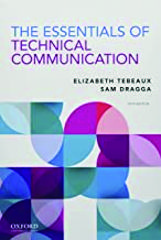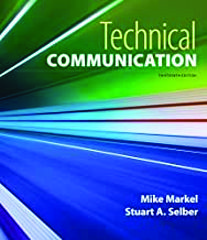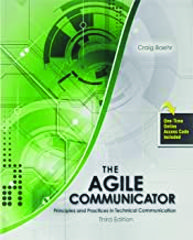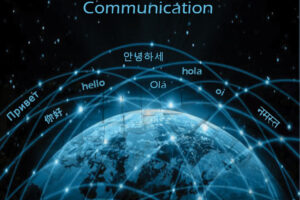By Lynne Cooke
Introduction
Every semester the instructors face a choice: which textbook will we use for our general technical communication course. It’s a course we’ve probably all taught, yet how much time and thought do we give to the textbook we use? Are you on autopilot and choose the same textbook year after year?
As you’ll see shortly, two of the three books reviewed here have 2021 editions and all have online supplemental material. Each comes with its set of strengths and is suitable for a particular audience. In full disclosure, I have used two of the textbooks, The Essentials of Technical Communication and Technical Communication for my upper division/graduate Fundamentals of Technical Communication course.
Are you ready to try a new textbook? Read on and see which is right for your technical communication class.
The Essentials of Technical Communication, 5th ed.
 Elizabeth Tebeaux and Sam Dragga have authored an abbreviated take on genres and strategies for communicating technical and persuasive information. The Essentials of Technical Communication is just that and targets a lower-division audience unfamiliar with the topic.
Elizabeth Tebeaux and Sam Dragga have authored an abbreviated take on genres and strategies for communicating technical and persuasive information. The Essentials of Technical Communication is just that and targets a lower-division audience unfamiliar with the topic.
If you’re used to other lengthy technical communication textbooks, you’ll find this one to be clear and concise. As one of the reviewers pointed out, the book “treats students like the busy adults that they are,” which is a very apt description of this book’s audience. At 424 pages, it is much more concise than competitors’ books that can reach 700+ pages.
Some of this compactness comes from leaving out chapters contained in other textbooks. For example, there isn’t a separate chapter on researching your subject, organizing your information, usability, or writing definitions. Instead, this information is incorporated throughout the book. For instance, the authors touch on usability when they discuss instructions; however, they do not go into any detail about the topic.
Tebeaux and Dragga continually emphasize the importance of audience as they note in an early textbook chapter: “Every decision you make in developing your documents should reflect your audience, their needs, and your purpose” (p. 15). In fact, the book includes an entire chapter on writing for your readers and producing audience-centered communication where the “you” approach to communicating is discussed.
The exercises are usually scenarios that involve students working either individually or in teams to solve a particular problem. Frequently, sample documents in need of revision are used for such exercises. There is nothing wrong with this, but I found that students quickly grew tired of these types of exercises and preferred other types of activities.
A typical chapter starts with an overview and objectives, then quickly moves on to the topic at hand. For example, in the chapter on proposal and progress reports, Tebeaux and Dragga provide a context for understanding the different technical communication document genres before delving into report writing. The chapters end with case studies, style checklists, and extensive exercises, the last of which seem a bit out of place in a book that markets itself as being the essentials of technical communication.
The textbook comes with an online component for students that includes internet resources, additional samples, and self-quizzes, along with PowerPoint slides that aren’t particularly visually appealing. The Essentials of Technical Communication is a good compact book that packs a lot into its pages. It would be an excellent choice for any introductory technical communication course. The accessible format and language make it a nice fit for the classroom.
Technical Communication, 13th ed.
 Editor’s Note: This book was reviewed as an e-book. The page citations follow that of the American Psychology Association’s 7th edition printing of the APA Publication Manual.
Editor’s Note: This book was reviewed as an e-book. The page citations follow that of the American Psychology Association’s 7th edition printing of the APA Publication Manual.
In this genre-based book, Mike Markel and Stuart Selber cover a lot of ground. From ethics in communication to document design to incident report writing, the topics are addressed in some detail, which is not surprising given the book’s 768-page length. The 13th edition was recently published and is available for your fall book orders.
Each chapter contains technical tips, annotated examples, cases, guidelines, and writers’ checklists that help ensure student comprehension. Each chapter ends with an exercise, appropriate for either in-class activities or take-home assignments. These are straightforward and directly address the material covered in the chapter.
Early on Markel and Selber break communication down into two types: (1) “communication that helps others learn about a subject, carry out a task, or make a decision,” or (2) “communication that reinforces or changes attitudes and motivates readers to take action” (Purpose Related Factors section, paragraph 1). This distinction between communication types is important because it calls attention to both audience and purpose. Many textbooks fail to state the communication breakdown in such a direct manner.
One of the book’s major strengths is its use of good examples in each chapter. They illustrate document types and contain extensive annotations which discuss the elements that make the document an exemplary piece of communication. These detailed annotations instruct students in understanding how a document achieves its purpose.
Two of the better chapters help students eliminate grammar, usage, and writing style errors. Technical Communication also devotes an entire chapter emphasizing how to arrange sentences and paragraphs while eliminating problems such as redundancy and wordiness. Several before and after examples are included and the exercises reinforce the covered material. An appendix with guidelines for editing and proofreading documents is a thoughtful addition. Put together, these guidelines comprehensively cover both the basics and nuances of writing, editing for clarity, and for using precise language.
Technical Communication is probably best for an upper-division class. Markel and Selber not only cover the genres of technical communication, but they also discuss evaluating and testing the usability of documents, designing online and print documentation, and creating graphics. Topics are covered at a more advanced level and examples are usually sophisticated pieces of writing.
Given its many features and its comprehensive coverage of all things technical communication, this is a solid choice as a textbook. The only real limiting factor is the cost, which at US$120.99 is steep. However, students have the option to rent the book for a lower cost or purchase an ebook version for US$59.99.
The Agile Communicator, 3rd ed.
 When I first got my hands on a copy of the 3rd edition of The Agile Communicator: Principles and Processes in Technical Communication, I was thrilled to see that it covered all the ancillary topics I had been covering in my technical communication classes for years: visual communication, team processes, and web authoring.
When I first got my hands on a copy of the 3rd edition of The Agile Communicator: Principles and Processes in Technical Communication, I was thrilled to see that it covered all the ancillary topics I had been covering in my technical communication classes for years: visual communication, team processes, and web authoring.
Craig Baehr does a great job of addressing all facets of technical communication in this comprehensive, but not overly dense, book. In the first chapter, students are introduced to Agile Communication and waterfall approaches to documentation development. These are especially apt given that most businesses work under these models. Communicators who are agile “target the incoming changes, employ their research and knowledge management skills to understand its effects, and then adjust and flex their communication skills to encompass or work with it” (p. 9). Technical communicators who exhibit these skills are more likely to be successful in school and in the workplace.
As he does in the introduction, Baehr ties technical communication to workplace practices wherever possible. He mentions single-sourcing, information re-use, and boilerplates and discusses how these are used in business. For instance, on page 17, there is a handy chart showing content reuse levels and features (Table 1.1). This is a topic you don’t often see discussed in textbooks even though it is common practice in the workplace.
The numerous exercises embedded within the chapters and set off in muted orange boxes are a particularly attractive feature of the book. Exercises are located close to the related material, and assignments, which are lengthy enough to be completed in class as a team or at home as a solo project, are provided at the end of the chapters. Such versatility is typical of The Agile Communicator.
The book’s online component is exceptionally well done. It includes case studies, models, and detailed PowerPoint slides that match the color scheme and theme of the edition. All the material is pertinent and makes for a first-rate supplement.
The book is extremely well laid out; the pages are inviting and easy to scan with color headings and subheadings, an ample amount of white space and, even though they are information-dense, they don’t feel crowded. Each chapter features at least one flowchart, infographic or other visual to demonstrate a process or communicate an idea. Bulleted lists, a favorite of technical communicators, are frequently used throughout and scenarios are regularly presented to help students understand the complexities of real-world situations.
The Agile Communicator is a versatile textbook that provides plenty of exercises, examples, and scenarios for students to draw upon as they continue their journey into technical communication. This book is best for intermediate or advanced technical communication students.
References
Baehr, Craig. (2019). The Agile Communicator: Principles and Practices in Technical Communication, 3rd ed. Kendall Hunt. [978-1-5249-7924-9. 420 pages, including index. US$89.99 (softcover).]
Markel, Mike, and Stuart Selber. (2021). Technical Communication, 13th ed. Bedford St. Martin’s [978-1-3192-4500-9. 768 pages, including index. US$120.99 (softcover).]
Tebeaux, Elizabeth and Sam Dragga. (2021). The Essentials of Technical Communication, 5th ed. Oxford University Press. [978-0-1975-3920-0. 424 pages, including index. US$59.99 (softcover).]
About the Author
Lynne Cooke is a Clinical Assistant Professor at Arizona State University where she teaches courses on usability, digital media, and portfolio development. She is also a member of the Arizona Chapter of STC and the Internship Coordinator at ASU.


